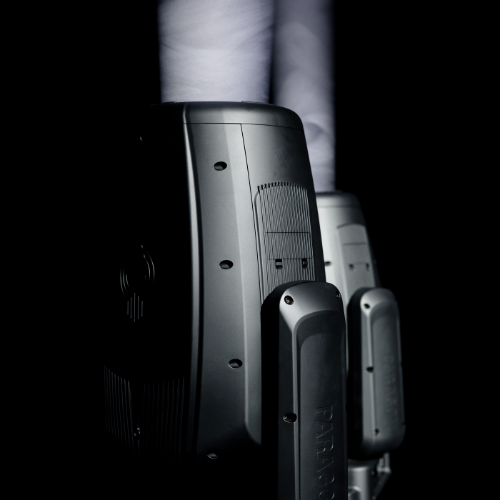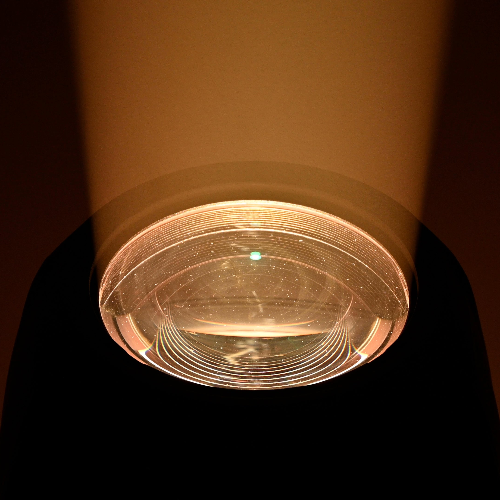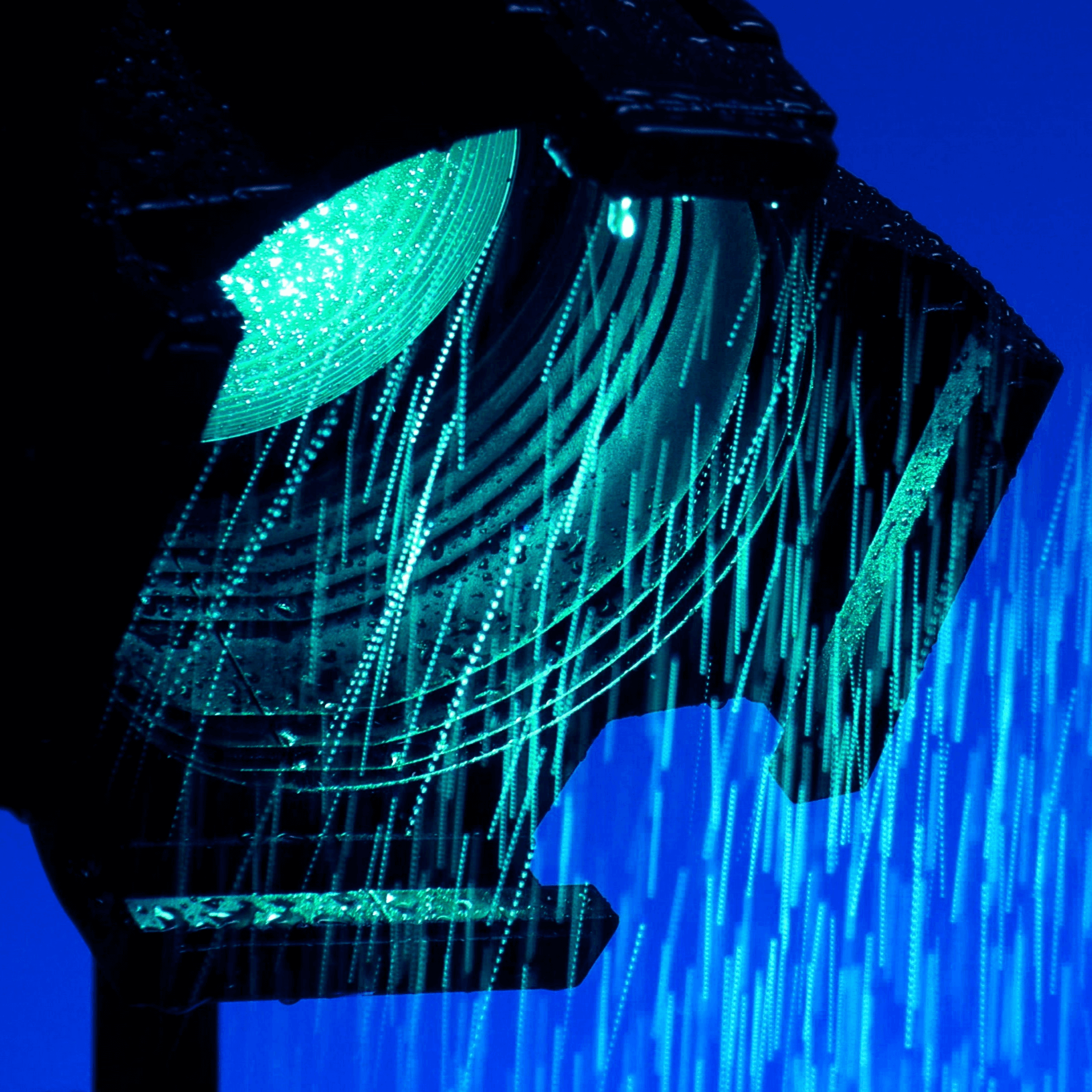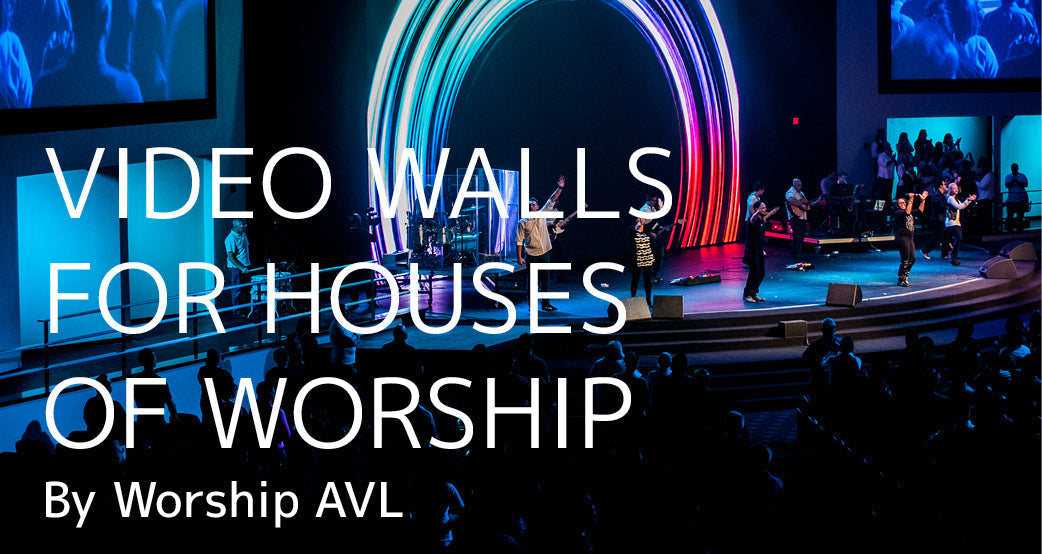Worship AVL Q&A with Eric Loader
What should a church consider when it comes to buying a new video wall?
The first thing to consider is how large of a display you are looking for. The larger the display - the more an LED screen makes sense. Sure we can build small high resolution displays but LED screens really shine when you are trying to cover a large area. Typically, screens start at a 9:16 aspect ratio and a minimum of 114 degree diagonal if put into TV terms. Depending on how large a screen you build and what the first viewing distance is - will dictate what pixel resolution screen will be ideal for your venue.
Existing infrastructure. Items like cameras, switchers and work flows all have to be considered to minimize the impact and frustration level of the “volunteer army”. The LED wall has such an impact visually that it is easy to be intimidated by the thought of this massive change; when in reality it should be the same impact as buying a new TV. Remember when you switched from your old square TV to the new HD flat panel how much clearer the picture was? You saw things you’d never seen before, the screen came alive. That’s similar to what an LED wall will do, but it can also show some of the imperfections of that older camera system.
What different types of video wall exist?
At Elation, we offer LED vIdeo panels which are used in multiples to create the screen / display size you require. We offer different pixel pitch solutions depending on the viewing distance - meaning how far away from the screen the first person is in your venue who will see it. The most popular pixel pitch solutions we offer are 6mm and 4mm - which gives an ideal viewing distance starting at 20' or 10'respectively.
Which (if any) is more popular in HOWs?
Depending on screen size- a larger screen say 20'H x 30'W would typically be a 6mm screen because you are going to have it at the back of the stage area and the first person to see it will be 30' or more away. For smaller display sizes = 4mm works best and is becoming more popular today. Most HOW clients are using a 9 panel by 5 panel system which would be equivalent to a 202” TV in a 4mm pitch or a 233” in a 6mm.

Have you seen a rise in the trend of churches investing in video walls? What solutions are they commonly replacing? Projectors?
YES! It’s all about providing a brighter and clearer message to your congregation.
How do different types of video wall suit different needs?
It’s all about the content - some are made for creative visual design displays - like curving panels or linear strips or "blow through" semi-transparent screens which can easily fly in and out or project light behind them as a scenic effect - others are simply made for high resolution clear displays or for outdoor applications/signage.
What research should a house of worship do before buying a video wall?
Buy from an established manufacturer. The technology is coming down in price and becoming more available - which means start up / pop up companies are looking to make a quick buck off the expanding market. Video walls are designed to last for 10+ years if properly maintained so...you want to ensure whoever you are buying from might be around still in 10 years. Elation has been in business for many years and has been servicing the HOW market for the past 15 years.
Manufacturerswith specific designs for HOW market considerations, like fan less design [no stage noise], High refresh rates [if the screen will be caught on camera for streaming or DVD services] and other small enhancements, make a big difference in the final project.
Are there options suitable for all budgets?
Yes and no...The minimal investment on a video screen of a decent size / pixel amount is around $50,000 - but most screen packages are being sold in the $150-200k range with the largest screens going for over $500k. Sure you can get solutions in between but...unless you have a decent budget, LED screens might not be the solution for you. Yes, the cost up front is more than high power video projectors but long term you will save and most of our customers are realizing the break-even point within the first 2-3 years.
How do the considerations change with size?
The type of content you are trying to put through the display is most important. Details that are very fine like shadows or smaller type are smoother the larger the wall gets. Viewing area needs to be discussed as sometimes 3 smaller screens are better than 2 larger ones, even if they use the same amount of panels.

How important is selecting the right video processor?
Again it depends if you are doing broadcast video or just visual display. Refresh rate and HZ processing speed are important for video broadcast. Also, depending on the content you are running you might want one with a built in scaler and one that has dual outputs for redundancy or split screen display applications.
Is this more or less important than the ‘wall’ itself?
Most LED walls are sold with their proprietary processor so its hand in hand. You can get into scalers and processing that are in the 50-70,00 mark. Elation takes the approach we are providing you with a surface, it’s up to you and your integrator to decide how to deliver that image to the surface. Of course our experience, and that of our dealer network who will be able to evaluate each case, will help to make suggestions even if it’s not an Elation product.
How do your products meet these considerations?
We use only broadcast quality processing for all our displays. Our broadcast and touring series is programmable to fit into different requirements with adjustable brightness and color calibration. This includes our EZ, EMAG, and EPT series panels.
How can you help a church pick the right product for its needs?
We work closely with them to understand what they have today and where they want to be in the future. Along with our worldwide dealer network we work closely with them to understand what they have today and where they want to be in the future.

What information do you need from the customer to make sure they get the right product?
Venue size, mounting possibilities, first viewing distance, existing video equipment, power available. And most importantly what vision the tech team (or pastor) is trying to achieve. Needs for a creative visual solution might be different than worship support or message enhancement.
What factors affect the performance of a video wall?
LED video walls do very well when its used in a high ambient light room - with windows for example....but also can be dimmed down and used very well at 20-30% output which also extends the life of the product exponentially. Content delivery is another big one. Because of LED walls have no loss of perceived signal, you will notice all the little artifacts contained in poorly designed or compressed video. Take a small youtube video and view it full screen and it will give you an idea of what we are suggesting.
Given that many operators are volunteers in houses of worship, are video walls typically easy to operate?
Once they are installed and set up yes - its plug and play - however for installation we rely on our dealers to install and set up the system but we also assist them on larger projects on site as required. Once set up the wall has an input (think back of the TV – HDMI 1, 2 or 3, DVI, or Coax antenna) it’s just a really big TV and that’s the best way for the volunteer army to think about it.

Do church leaders need to think about training technicians when considering a videowall?
For maintenance, yes. Most of the lesser expensive video wall panels have fans, so they need to be cleaned regularly. But anyone with an electronics background can be easily trained. There are 3 major parts to a wall and all are easily reached by a screw driver. Just like a car, change the oil, put gas in it and wash it every once in a while and it’ll last for years to come.
Are there any features of your video wall products that make it easier to beginners?
The software. We utilize leading edge control software that makes it easy for an end user to reconfigure the wall if they choose. Many of our HOW clients have not only iMAG walls but also use spare panels as drum risers, message boards, and scenic elements on stage.
Are they easy to maintain? Are some types easier to maintain than others?
[See above] but units w/o fans allow for less maintenance but typically are lower power displays which are ok for some applications.
Do different considerations need to be made if the service is being televised or broadcast?
Yes - frame delay rate is important to consider. Our processing typically runs from 1-1.5 frames per second loss - which is not really noticeable to the eye. Anything you put in between the screen and the source - will also add frame loss - switcher, scaler, etc...so you need to consider this when buying lower cost processors that have a 3-4 frame rate loss.



